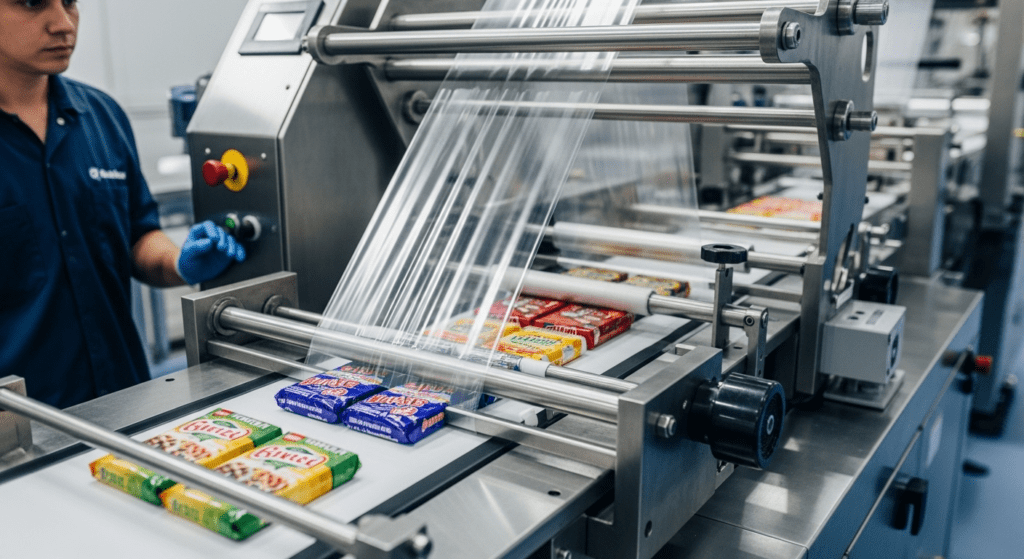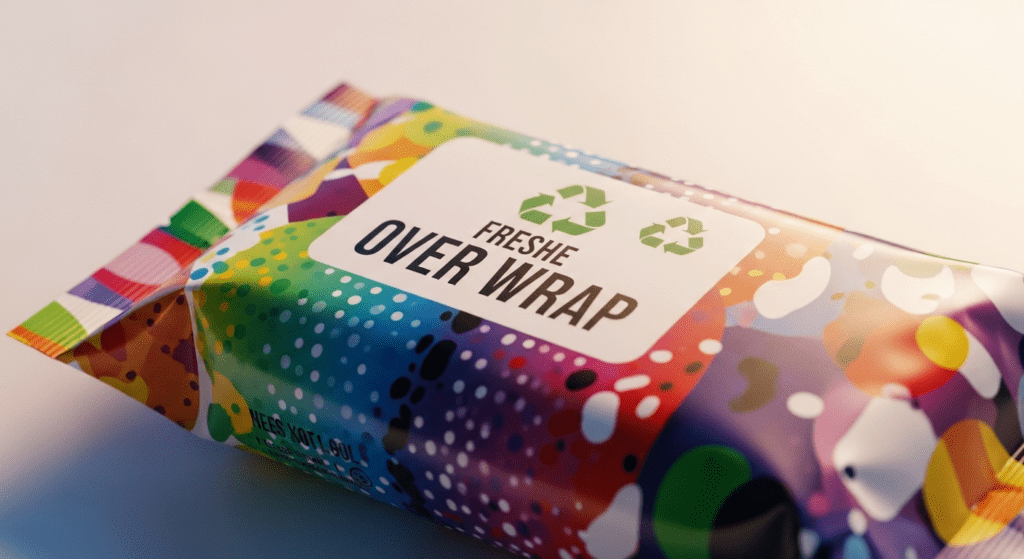Flow wrapping and over wrapping are two distinct packaging methods used in manufacturing and retail. Flow wrapping creates a sealed pouch around products using heat-sealed plastic film, while over wrapping loosely covers items with film that’s folded and sealed at the ends.
The main differences lie in their sealing methods, material usage, and applications. Flow wrapping costs more initially but provides superior barrier protection and faster production speeds. Over wrapping offers simpler operation and works well for decorative packaging needs.
What Is Flow Wrapping
Flow wrapping is a horizontal packaging process that completely seals products in plastic film. The machine pulls film from a roll, forms it into a tube around the product, and creates heat seals along the bottom and at both ends.
This method works like a continuous assembly line. Products move on a conveyor belt through the wrapping station. The film wraps around each item automatically.
The process creates an airtight package that protects against moisture, dust, and contamination. Food manufacturers rely on flow wrapping for items like candy bars, cookies, and fresh produce. The sealed edges ensure product freshness and extend shelf life.

What Is Over Wrapping
Over wrapping applies a loose film covering around products without creating airtight seals. The film folds over the item and gets sealed or tucked at specific points, usually the bottom or sides.
Think of it like gift wrapping but done by machine. The film drapes over the product rather than forming a tight seal around it.
This method works best for boxed items, multipacks, and products that need attractive presentation. Perfume boxes, tea packages, and DVD cases often use over wrapping. The film adds a professional appearance and tamper evidence without the complexity of full sealing.

The Difference Between Flow Wrapping and over Wrapping
Core Process
Flow wrapping forms a continuous tube of film around products with complete seals on all sides.
Over wrapping simply covers items with film folded at strategic points.
Primary Function
Flow wrapping protects products from environmental factors through airtight sealing.
Over wrapping provides aesthetic appeal and basic protection without hermetic sealing.
Product Shape
Flow wrapping handles irregular shapes, soft items, and products of varying sizes. The flexible film conforms to different geometries.
Over wrapping requires uniform, rigid products like boxes or firm packages.
Seal Type
Flow wrapping creates hermetic seals using heat and pressure on all package edges. These seals prevent air and moisture exchange.
Over wrapping uses partial seals or simple folds, allowing some air circulation.
Barrier Integrity
Flow wrapping provides complete barrier protection against oxygen, moisture, and contaminants. The sealed package acts like a protective shell.
Over wrapping offers minimal barrier properties since the wrapping remains partially open.
Production Speed
Flow wrapping machines operate at high speeds, often exceeding 300 packages per minute. The continuous motion and automated sealing enable rapid production.
Over wrapping runs slower, typically 30-120 packages per minute.
Material Efficiency
Flow wrapping uses film efficiently by creating precise packages with minimal excess. The flow wrapping cost benefits from this efficiency through reduced material waste.
Over wrapping requires more film to achieve coverage, especially for irregular shapes.
Film Compatibility
Flow wrapping works with heat-sealable films like polyethylene, polypropylene, and laminates. These materials must bond when heated.
Over wrapping accepts both sealable and non-sealable films, including cellophane and shrink films.
Typical Applications
Flow wrapping dominates food packaging, medical supplies, and items requiring freshness preservation. Candy bars, surgical instruments, and wet wipes rely on flow wrapping.
Over wrapping serves luxury goods, retail multipacks, and promotional packaging.
Cost
Initial equipment investment favors over wrapping with simpler, less expensive machines. Flow wrapping equipment costs more due to complex sealing systems and controls.
Flow wrapping’s material efficiency and higher speeds reduce per-package costs over time. Labor requirements stay low for both methods with proper automation.


